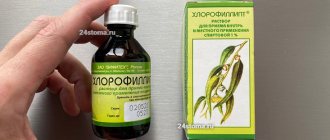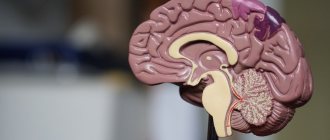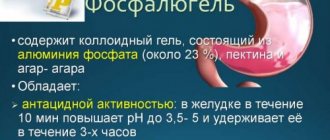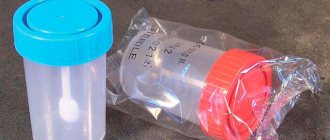Pneumonia is an acute infectious disease in which the inflammatory process is localized in the lung tissue. Inflammation is caused by various microorganisms - bacteria, viruses, fungi, protozoa. At the Yusupov Hospital, pulmonologists prescribe comprehensive treatment for pneumonia. Individual treatment regimens include antibacterial drugs, agents that thin sputum and improve bronchial drainage function, and immunomodulators.
Patients with mild pneumonia are treated on an outpatient basis. In moderate and severe cases of the disease, patients with pneumonia are hospitalized in a therapy clinic. Particularly severe patients are treated in the intensive care unit.
The mechanism of action of cans and mustard plasters
Medical banks
Cupping treatment involves a vacuum effect on the skin in the respiratory area, which increases blood flow and tissue exchange in these areas. For the procedure, you cannot use ordinary jars; you must purchase special vessels with a semicircular bottom and thickenings at the edges at the pharmacy. The standard volume of medical jars ranges from 30 to 79 ml.
When installing the can, part of the skin seems to be drawn into it under the influence of negative pressure. After the container is torn away from the skin, small hematomas may form on the body, as the pressure breaks the smallest vessels of the subcutaneous tissue. Further, restoration processes are activated in this area, the restoration of nearby tissues and organs is stimulated. Therefore, when placing cups on the skin in the area of the respiratory system, the recovery process from bronchitis, pneumonia and other diseases is accelerated.
As a result of treatment, pain is reduced, inflammatory processes cease, tissue regeneration and recovery are accelerated.
Mustard plasters
Mustard plaster is a bag of porous material filled with mustard powder, which is previously degreased. The mechanism of its action is based on the irritating effect of mustard seed essential oil. At the site where the mustard plaster is installed, the skin warms up and turns red, the superficial vessels dilate, and blood circulation in the subcutaneous tissue increases.
Another effect that is observed as a result of applying mustard plasters is irritation of the nerve endings of the skin and activation of the central nervous system, which leads to the release of adrenaline and the launch of the immune response of phagocytic cells.
As a result of double exposure, not only does trophism and tissue respiration increase, but also the immune system is stimulated. Warming the surrounding tissues helps to increase metabolism and speedy removal of sputum from the bronchi.
Mustard plasters for bronchitis in children
Many parents are interested in whether it is possible to put mustard plasters on children for bronchitis. You can bet, but there are a number of points.
So, it is more difficult to administer powder to a child than to an adult. Since the burning sensation that accompanies the procedure can cause particular discomfort in the child.
For children, it can be replaced with a mustard-based warming bath, it is done like this:
- prepare a basin and fill it with warm water,
- add a couple of spoons of mustard powder there,
- Offer to steam the child’s feet in the bath for 15 minutes, and wrap their upper part.
As for the mustard plasters themselves, be sure to take into account the age of the child; the younger he is, the less they are kept on the body.
It is impossible to warm up a child for a long time, especially if the procedure is performed for the first time.
However, even adult children often cannot stand lying still for five minutes, so a mustard-based bath will be an excellent alternative.
Children are prescribed mustard baths for about 15 minutes, and mustard plasters are applied for 5-10 minutes.
Baths can be alternated with chest warming even for adults.
Contraindications to their use
General contraindications to the use of mustard plasters and cupping apply to people with diseases:
- Spine;
- Oncological formations;
- Cramps;
- Blood clotting disorders;
- Pulmonary tuberculosis.
In addition, these drugs cannot be used during pregnancy and lactation, at elevated body temperature, or when the patient is mentally excited. For purulent rashes and other skin diseases, it is not recommended to install mustard plasters and cups, so as not to provoke inflammatory processes and not aggravate the patient’s condition.
There are also contraindications for each of the methods separately.
Thus, mustard plasters cannot be installed on newborns until the first year of life; until three years of age, they are used only through a pad in the form of cotton material, a bandage or a napkin.
Mustard plasters are contraindicated for:
- Psoriasis;
- Bronchial asthma;
- Allergic reactions.
Medical cups are contraindicated for illnesses
- Blood;
- Hypertension;
- Heart failure and vascular diseases;
- Tendency to thrombosis.
General exhaustion of the body, nervousness and insomnia are also contraindications. Medical cups are used starting from the age of three; they should not be used on small children.
DOES PNEUMONIA REALLY FOLLOW COVID-19?
— Recently, an analysis of statistical data shows that the medical community is mistakenly addicted to antibiotics in the treatment of a new coronavirus infection, suggesting that changes in the lungs are immediately associated not only with the virus, but also with a bacterial component. This is not true, says pulmonologist Vladimir Beketov.
According to the expert, to date, a number of reputable medical associations have issued memorandums and open letters calling on colleagues to reduce the use of antibiotics during the treatment of COVID-19, because antibiotics do not provide benefit, but in this case cause harm, including toxic damage to the liver and development of antibiotic-associated diarrhea.
— That is, we seem to be trying to treat pneumonia, which in the doctor’s mind is strongly associated with bacteria, but in fact, at the stage, while there is no secondary pneumonia associated with Covid, we are only dealing with coronavirus lung damage, which is recommended not to be called pneumonia, and call it pneumonitis (inflammation of the vascular walls of the alveoli, as well as the tissue separating the alveoli from the lungs, which is accompanied by scarring - editor's note), says pulmonologist Vladimir Beketov.
The very phenomenon of secondary bacterial pneumonia due to coronavirus is overestimated, the expert continues. Such processes develop mainly in patients with heart failure, and for them there are increased precautions, restrictions on movement, recommendations for self-isolation and treatment at home.
- Smokers are also at risk for developing bacterial pneumonia. However, if smokers with COPD receive proper inhalation treatment and are vaccinated against pneumococcus, then their risks of secondary bacterial pneumonia are also minimized, says Vladimir Beketov.
When to expect the effect?
As the only means of treating bronchitis and pneumonia, the effectiveness of mustard plasters and cupping will be low. Moreover, in the acute stage of diseases, improvement can often only be achieved using antibacterial therapy.
When treating diseases of the respiratory system in children under 12 years of age, in addition to drug therapy and auxiliary techniques - cupping and mustard plasters - massage and breathing exercises should be used. Vacuum cupping massage in combination with Strelnikova’s breathing exercises shows good results in the treatment of bronchitis.
Tangible results from the use of mustard plasters and cupping appear after the second or third procedure; if there is no improvement, this technique should be abandoned.
Antibacterial therapy
The basis of treatment for pneumonia is antibacterial therapy. At the Yusupov Hospital, pulmonologists use the latest drugs registered in the Russian Federation. When a sick patient enters a therapy clinic, the choice of antibiotic is made empirically. Doctors take into account the epidemiological and clinical situation, and lung radiography data.
Since the disease is most often caused by pneumococci, initial therapy begins with penicillins and aminopenicillins. Second-line drugs are cephalosporins. If you are allergic to β-lactam antibiotics, all these medications are not used. Alternative agents are macrolides.
In cases of severe pneumonia, doctors at the Yusupov Hospital choose broad-spectrum antibacterial agents for initial treatment. They use combinations of antibiotics to suppress the maximum number of possible infectious agents. The drugs are administered intravenously and intramuscularly.
In the therapy clinic, doctors widely use a new generation of fluoroquinolones to treat pneumonia:
- levofloxacin;
- moxifloxacin;
- sparfloxacin.
They are highly effective, suppressing gram-positive and gram-negative microflora, as well as intracellular microorganisms (mycoplasma, chlamydia, legionella).
In nosocomial pneumonia, the most common pathogens are gram-negative bacilli and staphylococci. In these cases, combinations of metronidazole with third-generation cephalosporins or ciprofloxacin are used to treat pneumonia. Patients after traumatic brain injuries are treated with monotherapy with IV generation cephalosporins or ciprofloxacin; if necessary, a combination of a III generation cephalosporin with ciprofloxacin or aminoglycosides is used.
How to install mustard plasters correctly?
Mustard plasters can be installed only after the patient’s condition has stabilized, when all that remains of all the symptoms of bronchitis and bronchopneumonia is a lingering cough. Mustard plasters improve the condition of adults and children with dry cough and congestion in the lungs. As the skin warms up, blood flows out from the affected areas into the vessels of the subcutaneous tissue. In addition, after the procedure, the immune system is activated and expectoration is facilitated, which reduces intoxication of the body with excess sputum.
Mustard plasters can be done within a day after the temperature for bronchitis subsides. In case of pneumonia, you need to wait two days from the moment the temperature stabilizes.
How to put mustard plasters on your back?
Mustard plasters can be installed under and between the shoulder blades, in the upper area of the sternum, as well as on the calves and feet in the heel area. Mustard plasters should not be installed too close to each other, located in the area of the projection of the kidneys and heart, or on the mammary glands in women.
- A bag of mustard powder is dipped in warm water (40-45 °C) and placed on the selected area depending on the site of inflammation, kept for five to fifteen minutes and removed, after which the skin is wiped with a damp cloth and the patient is left to rest in bed for several hours .
- The procedure for installing mustard plasters should not be painful for the patient; a slight burning sensation is acceptable, but not necessary. If the burning becomes unbearable, you should immediately remove the mustard plaster and wipe the skin with a damp cloth.
- Redness of the skin after installation of mustard plaster may persist for several days, but a bright red or purple color indicates individual intolerance or an allergic reaction in the patient.
- It is forbidden to wipe the skin with alcohol or alcohol-containing products after installing mustard plasters.
Acute bronchitis advice from a pulmonologist
One of the common causes of cough in childhood is bronchitis. This is an inflammatory process of the mucous membrane of the bronchial tree, accompanied by swelling. Despite the apparent simplicity and supposed clarity of the understanding of this disease, parents still do not know much and make serious mistakes. Today we’ll talk to a pulmonologist about bronchitis from the perspective of evidence-based medicine.
Causes and mechanisms
The term “Bronchitis” only emphasizes the localization of the pathological process (bronchi), but does not say anything about the nature of the inflammation. It is often caused by viruses and much less often by bacteria. Moreover, it is impossible to determine the etiology just by the color and nature of the sputum.
Bronchitis is characterized by an increase in the volume of secretions produced by the bronchi. This is where the cough comes from. This is a reflex mechanism aimed at removing sputum, dust particles, viruses and other foreign substances from the bronchi.
Symptoms of bronchitis
Typical symptoms of bronchitis are cough with phlegm. The latter can have a different character - transparent, yellow or green.
With bronchitis there may also be additional manifestations:
- temperature increase;
- general weakness;
- discomfort behind the sternum.
Usually the symptoms are most pronounced in the first 3-4 days, then gradually subside. With a smooth course, recovery occurs by about 7-10 days. By the way, residual cough can last up to 3-4 weeks and in most cases it does not require therapy.
Treatment
A big misconception is the prescription of antibiotics for bronchitis. These drugs are indicated only in one case, when it is proven that bacteria are the cause of the inflammation.
The basic principles of treating bronchitis are the following:
1. Air humidification. It should also be cool. Ventilate the room - this makes breathing easier and improves coughing.
2. Drink plenty of fluids at room temperature or slightly cool. This improves sputum discharge.
3. Reducing high (!) temperature. For this, ibuprofen or paracetamol can be used in accordance with age-specific dosages. Ibuprofen and paracetamol are calculated based on the child’s weight. There is no single figure for when to lower the temperature. We focus not on the number on the thermometer, but on the child’s well-being. But it is worth remembering that a passion for non-steroids can erase the true clinical picture and prevent timely diagnosis of pneumonia.
4. Performing breathing exercises and vibration massage of the chest. These exercises improve bronchial drainage and help remove mucus from them. For the same purpose, children with bronchitis are allowed and even recommended to run, jump, play and have fun.
Pitfalls in treatment
It is worth mentioning mucolytics - drugs that thin out sputum. These medications are contraindicated for bronchitis in children under 3 years of age. The fact is that until this age, children's bronchi are narrow, and the mucous membrane contains a large number of goblet cells that produce mucus. And with all this, the cough reflex is minimally developed up to 3 years of age. Therefore, using mucolytics for bronchitis before the age of 3, we can aggravate the situation - the amount of liquid sputum increases, but it cannot be fully removed from the bronchi.
Expectorants of plant origin also require separate lighting. This group of drugs does not have reliable evidence of effectiveness. In addition, there is a risk of developing an allergic reaction to any of the components of the herbal mixture.
And some information about the use of a nebulizer, it is only needed for obstruction. And in this case, only bronchodilators are needed; there is no need to breathe mineral water, saline solution or antibiotics.
Conclusion
A clear understanding of the mechanisms and causes of the development of bronchitis helps to quickly get rid of this disease. It is important that not everything can be treated only with medications. The main place in stopping inflammation in the bronchi is given to general measures, the organization of which falls on the shoulders of the parents. Evidence-based medicine to protect your child's health!
Cupping for the treatment of bronchitis
Before using medical cups as part of complex therapy for bronchitis and pneumonia, you should consult a doctor. The danger of this method lies in the likelihood of rupture of lung tissue located close to the skin tissue, which aggravates the patient’s condition.
Cups can be used only after the patient has passed the acute stage of bronchitis and pneumonia - with their help you can speed up the recovery process. Contraindications for use are symptoms such as fever, signs of intoxication, fever, respiratory failure. Cupping can be placed no earlier than two days after the cessation of these symptoms, when the patient’s condition has stabilized.
How to put cans on your back?
The procedure for installing medical cups:
- The patient is placed on his stomach. Wipe your back with alcohol for disinfection and Vaseline or nourishing cream so that when the can is torn off, the skin is not injured.
- To carry out the procedure, you must have a set of clean and dry medical jars, alcohol, cotton wool, matches, tweezers, and Vaseline.
- Places for installing cups are selected depending on the location of the area of the inflamed organ; the areas under the shoulder blades, collarbones, lower back, and the area between the shoulder blade and spine are suitable for this. In any case, the site where the jar is placed should not have bony protrusions; choose an area with good muscle and fat layer, avoid the heart area to avoid complications.
- The cotton wool is held with tweezers, moistened with alcohol and set on fire. Burning cotton wool is introduced into the jar for a few seconds without touching the walls of the container, after which the jar is placed on the selected area of the skin.
- During the first procedure, the jar is held on the skin for 1-2 minutes; for repeated procedures, which are carried out with a break of at least a day, the duration can be gradually increased to 15 minutes.
- To remove the jar, you need to tilt it slightly to the side and press your finger on the skin from the opposite edge so that a little air enters the container. Then the can comes off the skin more easily without injuring it.
If the procedure is carried out correctly, the patient does not experience severe discomfort or pain; warmth and slight tension may be felt at the site where the jar is placed. The skin color in these areas becomes reddish or purple, but after a few days the hematomas resolve.
Cough with bronchitis
With bronchitis, there are several types of cough - wet and dry .
Dry throat is more common, it irritates the throat and is unpleasant because it is superficial and the person cannot cough up the throat.
A number of experts say that over time it turns into wet, but this does not mean that it cannot be treated.
With a dry cough, sputum accumulates, which actively spreads bacteria during bronchitis.
With a wet cough, the cough is deep and phlegm is produced. But treatment for cough with bronchitis should be regardless of its type.
Some types of therapy involve the use of medications, but in some cases traditional methods of treatment can also be prescribed.
In particular, the use of mustard plasters for bronchitis.
When should you stop using cans and mustard plasters?
These techniques cannot be used if any of the above contraindications are present, as well as if the patient’s subjective sensations worsen – if an unbearable burning sensation, pain, or psychological discomfort occurs.
Author of the article:
Mochalov Pavel Alexandrovich |
Doctor of Medical Sciences therapist Education: Moscow Medical Institute named after. I. M. Sechenov, specialty - “General Medicine” in 1991, in 1993 “Occupational diseases”, in 1996 “Therapy”. Our authors
Adverse consequences
Adverse consequences of using mustard plasters can be skin irritation up to severe burns, skin hyperpigmentation, and the development of allergies, both local (severe hyperemia, urticaria) and systemic (Quincke's edema).
You can see in the photo what an allergic reaction to mustard might look like.
One of the options for an allergic reaction to mustard plasters
If the patient experiences a strong burning sensation and/or pain, further procedures should be abandoned, the mustard plasters should be removed, the mustard should be removed, the skin should be washed with warm water and lubricated with baby cream.









